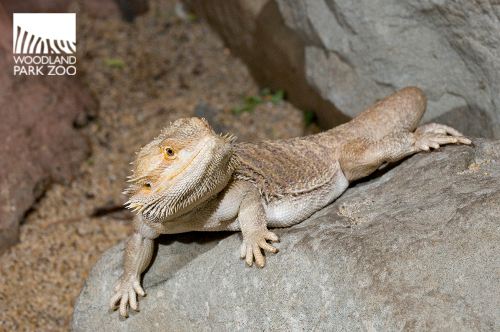Bearded Dragon Body Temperature: Keeping Your Reptile Healthy
Introduction
Bearded dragons are popular pets for reptile enthusiasts because of their calm nature and unique appearance. However, like all animals, bearded dragons require proper care and attention to maintain their physical and mental health. One crucial aspect of caring for bearded dragons is monitoring their body temperature. In this blog post, we will discuss why body temperature is essential for your bearded dragon and how to maintain the right temperature range.
Why Body Temperature is Crucial for Bearded Dragons

Bearded dragons are ectothermic, meaning they rely on external heat sources to regulate their body temperature. Their ideal temperature range varies depending on their age, size, and overall health, but generally falls between 85-105°F (29-40°C). Maintaining the right body temperature is crucial for the following reasons:
- Proper digestion: Bearded dragons are omnivores and require a balanced diet of vegetables and insects. They need a warm environment to facilitate digestion and nutrient absorption.
- Metabolic function: The enzymes and bodily processes that support vital functions, such as breathing and circulation, are temperature-dependent.
- Behavioral and psychological health: Bearded dragons are active during the day and need a warm, well-lit environment to exhibit natural behaviors and feel comfortable in their surroundings.
Monitoring Your Bearded Dragon’s Body Temperature

To ensure your bearded dragon stays healthy and active, it’s vital to monitor their body temperature frequently. Here are some essential tips to follow:
Use a Digital Thermometer
Digital thermometers are more accurate than analog ones and can provide real-time temperature readings. Place the thermometer probe on the warm side of the terrarium, where the basking area is located, and ensure it’s not touching any surfaces.
Create a Thermal Gradient

Bearded dragons need a thermal gradient, meaning they can move between a warm and cool area within the terrarium. This allows them to regulate their body temperature and avoid overheating. Create a basking area with a heat lamp or ceramic heat emitter on one side of the terrarium and a cooler area on the opposite side. Use a substrate or hide box to insulate the cool area and prevent heat loss.
Observe Your Bearded Dragon’s Behavior

Bearded dragons are intuitive creatures and will exhibit behavior changes if they’re too hot or too cold. Signs of overheating include lethargy, panting, and a lack of appetite. Signs of underheating include reduced activity levels, lack of appetite, and staying in the hide box for prolonged periods. If you notice any of these symptoms, check the temperature and adjust the heat sources accordingly.
Conclusion
Maintaining the right body temperature is essential for your bearded dragon’s overall health and well-being. By using a digital thermometer, creating a thermal gradient, and observing your bearded dragon’s behavior, you can ensure they’re comfortable and healthy in their terrarium environment. Remember to also provide proper nutrition, hydration, and mental stimulation for a well-rounded, happy pet.
